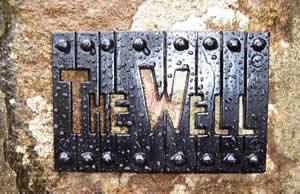The Wells project
Documents
Water supplies to some of the Meerbrook farms.
Snippets from a conversation which I had with a father and his daughter recently.
“Oxhay was farmed by the Moss family. In the kitchen, there was a stone trough where the stream water ran through. It was probably used to cool the milk in the churns but it made it very cold in the room.”
“There used to be two New Grange farms. The Robinsons lived at one and William Hine at the other. In 1947, during the Big Snow, they had 70 cows and followers, which was a lot for those days. Some of the farm buildings were in stone but a very small brick was also used for some of them. The pay was £7 a week plus keep for a general farm worker. The Robinsons had a ram (hydraulic pump) in the brook which pumped the water up to the farmhouse. They had to dam the brook a bit to make it deeper. The valves had to be cleaned to keep it running as grit got into them. There was also a ram used at Buttyfold in the brook to pump the main water. There were several wells behind Tattons as well and that water was used for Leek.”
“Upper Haddon had a well on the East side of the house. It had a top on it and a rail round. There was a step down and you had to scoop up the water. The story goes that a cobbler’s child from Lock Gate drowned in that well. The water from the well ran into a brick tank, and then it was pumped into a header tank in the house. From there it ran into a big tank in the buildings for the cows. A hand pump was used for the cows and it was taken by bucket to the house, until an electric pump was installed later for the house.”
“The Heath’s lived at Waterhouse farm but the mill was not used then. Joe lived there with his parents.
Maud Armett lived at Ivy cottage. It was a nice little stone cottage on the pub side and the land by the chapel belonged to Ivy Cottage.
Three cottages belonged to the church. They are now known as Church Cottage.
Mrs Allan lived at the pub cottage but no-one was at the Smithy. It was where the pub car park is now.
Sparrow Hall used to have water piped from the fields to a trough. It dried up in summer so churns were used to take water down from Haddon. Sometimes the post man would take it down!
William Pimlott was at Wetwood and the Hines were at Upper Wetwood.
There was a milk stand for Hillswood but if the churns were picked up from a farm yard there would be people around to help load. Bernard Allan used to drive the milk wagons. He went to Meerbrook School. He said there was a pump in the school for the water. The milk wagons would bring corn back from Manchester on top of the empty churns.”
Recorded in January 2009 by Irene Kirkpatrick
This is a short recording by Glenys Barlow on her memories of Meerbrook and the Well.
.jpg)
Meerbrook Well – visit on 29th February 2008
On 29th February 2008 a small group of people from the local history group – Leekfrith Bygone Days – went to Meerbrook well to make a record of its present state. Measurements and photographs were taken.
The depth of the water was found to be 38 inches and the depth of the water to the first step was 28 inches.
At some time in the past the area has been made safe by building above and around the water. The dimensions of the stonework on the roadside are 13' 3" x 6'6". This has also ensured that animals were not able to gain access.
The door size is 29" x 71" and the ante chamber at the top of the steps is 41" x 37".
There are 3 steps down to the water and then a landing.
Here are a few photos of the well in Meerbrook as it was in March 2008
.jpg)
.jpg)
.jpg)
.jpg)
.jpg)
.jpg)

